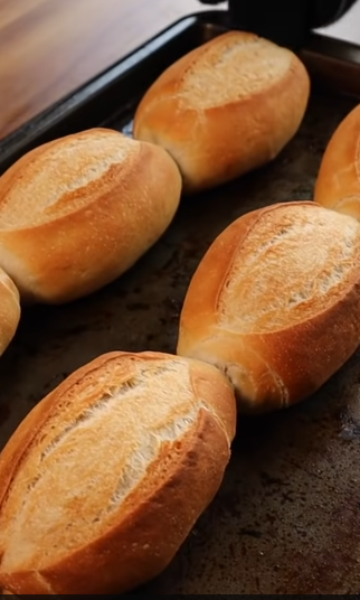Fermentation is a very important process in many recipes, but how can you do it naturally? Check it out here.
Natural yeast – also called levain – is prepared with a simple mixture of water and flour which, after a few days of “rest”, will form a colony of microorganisms, widely used in naturally fermented bread recipes.
As the days pass, the mixture will begin to ferment due to the action of yeasts and bacteria present in the air or due to the action of those already present in the flour.
What is sourdough?
From the union of wheat flour and water, natural yeast is born. The microorganisms present in this environment begin a fermentation process that, after a few days, transforms the dough into a live and active yeast, ready to give life to artisanal breads.
How to make natural yeast?
The organisms that will make up your natural yeast – or levain – must be stored at temperatures between 27 and 32 degrees for eight days. It can be prepared with just water or pineapple juice.
Day 1
In a bowl, mix:
60 ml strained pineapple juice (do not use canned juice. Puree the pineapple in a blender.)
50 g wholemeal flour or wholemeal rye flour
Cover with a clean cloth or cling film and store in a cool place.
Day 2 – First fermentation bubbles
The next day, stir this mixture and the first fermentation bubbles should begin to appear.
Day 3 – Increase the mixture
Add to the mix:
20 ml of filtered pineapple juice
30 grams of wholemeal flour or wholemeal rye flour
Mix and cover with a clean cloth or cling film. Store in a cool place.
Day 4-
On the fourth day, it is important to check the bottom of the pot and see if there are any bubbles. If there are no bubbles, it is a sign that the mixture is not fermenting and you should start over.
If you notice bubbles, stir and cover with a clean cloth or cling film and store in a cool place.
Day 5 – Final stage
Add to the mix:
30 ml of filtered water,
50 g wholemeal flour or wholemeal rye flour
Mix and cover with a clean cloth or cling film and store in a cool place.
Day 6 – Practical tests
Discard half of your yeast or donate it to someone who wants to start this step now. In the other half add:
30 ml of filtered water,
75 grams of wholemeal flour or wholemeal rye flour
Mix and form a ball with your hands. Place in a clean bowl, cover with cling film and store in a cool place.
Day 7 – Final stage
Place in a medium bowl:
100 grams of your natural yeast
200 ml of filtered water,
300 grams of wholemeal flour.
Mix until it forms a ball. Cover and let it rest in a protected place until it doubles in volume, which can take 2 to 4 hours. Place it in a plastic container with a lid (do not use glass).
Day 8 – It’s ready!
Before making bread, take your sourdough starter and feed it 2 to 8 hours before you start baking. Now you have your sourdough starter and you can prepare your recipe!
What is the difference between natural yeast and organic yeast?
The difference between the taste of homemade bread and that of industrialized bread is in the yeast. While industrialized organic yeast is produced in a laboratory and uses only selected yeasts for a quick and uniform result, natural yeast is born from a unique combination of bacteria and yeasts present in the air.
This microbial complexity translates into a deeper flavor, which varies depending on the environment and ingredients used. Organic yeast is produced in grain, tablet or powder form.
What are the benefits of sourdough?
The microorganisms present in natural yeast are allies of our digestion and help break down proteins, such as gluten, making bread more digestible, even for those who are sensitive to this substance.
Additionally, these foods are rich in probiotics, which help nourish the intestinal flora and contribute to a healthier digestive system.

From French to Peeled: Do You Know These Nicknames for Bread in Brazil?
Source: Terra
Ben Stock is a lifestyle journalist and author at Gossipify. He writes about topics such as health, wellness, travel, food and home decor. He provides practical advice and inspiration to improve well-being, keeps readers up to date with latest lifestyle news and trends, known for his engaging writing style, in-depth analysis and unique perspectives.









